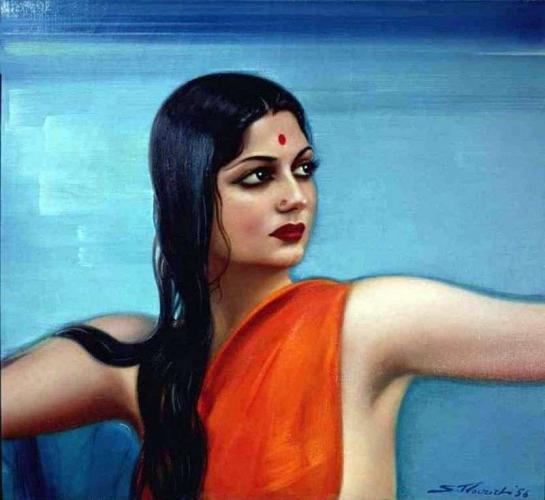
A famed Russian painter, a noted Indian film actress and her friend as the painter’s muse – all with a deep Bengaluru connection that stands alive in the collection of paintings of Svetoslav Nikolaevich Roerich. The last living link in that exciting story of connections is now gone. It was so quiet a life and a passing that almost no one noticed or knew about this extraordinary journey.
This is the story of Roshan Vajifdar Ghosh, who passed away in Kodaikanal last week. Roerich made life-size paintings of Roshan when she lived in Bangalore for seven years, training in Bharat Natyam under Thanjavur Kittappa Pillai. Roshan Vajifdar was an internationally renowned dancer, reviewed by newspapers and notably the muse of Roerich, who was married to her friend, the actress Devika Rani.
Roshan left the big cities to live a quiet life in Kodai. In doing so, she bid goodbye to the riveting performances that she was known to have given with her sisters Shirin and Khurshid. The three were great contemporary dancers of their time, and were counted among names that included Mrinalini Sarabai, Rukmini Arundale, Kanak Rele and Indrani Rahman. Roshan was the last of the sisters to pass away, ending an era of Indian classical dance.
Roshan Vajifdar was an internationally renowned dancer, reviewed by newspapers and notably the muse of Roerich, who was married to her friend, the actress Devika Rani.
The Vajifdar sisters were an aberration. They danced at a time when it was considered an unbecoming occupation for Parsi girls. And they trained in Indian classical dance when members of their anglicised community would have probably chosen ballet. Unusually too for dancers, the Parsi sisters trained in multiple classical dance forms – Kathak, Manipuri, Bharat Natyam, Mohiniattam, while contemporaries mastered one or two forms at the most. The taboos the Vajifdar sisters broke invited the ire of the community and a number of their performances were disrupted. But the show, started by Shirin Vajifdar, went on.
Shirin, the eldest of the siblings, made the first move and learnt Kathak. She taught her younger sisters and soon the three danced before cheering audiences. Later they moved from stage performances to teaching dance. Shirin married the famous author Mulk Raj Anand and Khurshid married the noted artist Shiavax Chavda. Roshan married a chiropractor Dr. Hiranmoy Ghosh who managed many of her programmes. Later, when they shifted to a quiet life in Kodaikanal, she taught dance in two boarding schools – Presentation Convent (PCK) and then in the Kodai International School.
The Vajifdar sisters were an aberration. They danced at a time when it was considered an unbecoming occupation for Parsi girls.
In the PCK corridor that went past the Principal’s office to the Assembly Hall, where she taught her favourite classical dance form Bharat Natyam, Mrs. Ghosh in her dark glasses, striding by with grace was not an uncommon sight. This writer, who was in PCK as a student then, recalls that the ‘subject’ was called “Indian Dancing” to differentiate it from ballet which was the first dance form taught in school. Those Roshan Ghosh instructed were probably the only ones who knew her just a little bit better than the rest of us. But only just a bit.
The story of Mrs. Ghosh would have remained where it was but for a lunch meeting with the dancer Jeroo Chawda when she spoke about her famous aunt Roshan Vajifdar. We have been stunned since. In those pre-television and pre-social media days, nobody had connected the famous Parsi dancer, the reviews, her appearance in Kishore Sahu’s “Mayurpankh”, screened at the 1954 Cannes Film Festival and performances on stages across the world, to our “Indian dancing” teacher!
In those pre-television and pre-social media days, nobody had connected the famous Parsi dancer, the reviews, her appearance in Kishore Sahu’s “Mayurpankh”, screened at the 1954 Cannes Film Festival and performances on stages across the world, to our “Indian dancing” teacher!
Not even the Irish nuns running the Presentation order knew of these accomplishments. The school principal at the time, Sister Adrian, decided to move religion away from the PCK chapel and give it a more inclusive form. “Praying to light” meant lighting a lamp in The Assembly Hall or Reading Room for all those interested in prayer of some sort. Mrs. Ghosh was called to lead the prayer while Sister Adrian stood or knelt beside her. There was no hesitation as she assumed the role with grace and ease. Already then, Mrs. Hiranmoy Ghosh had moved away, closed a chapter and neatly filed Roshan Vajifdar in her scrap book of newspaper clippings.



